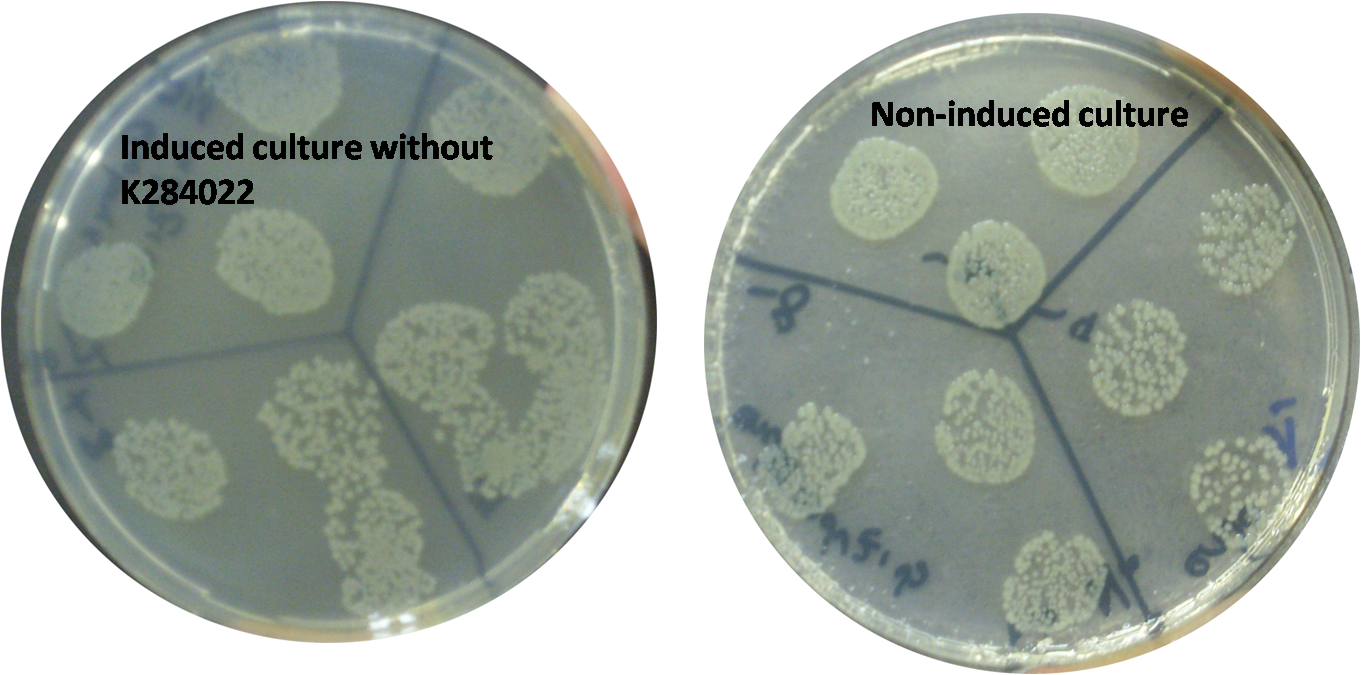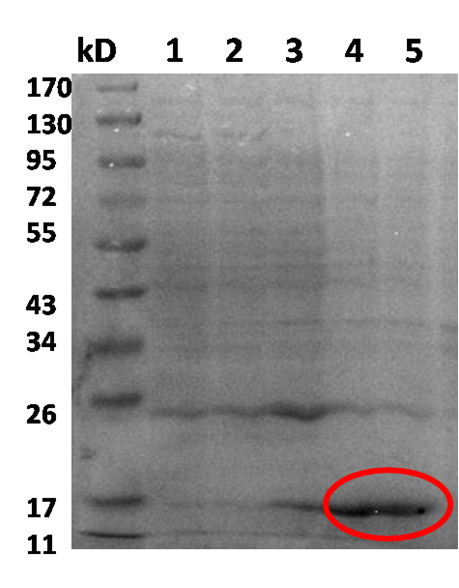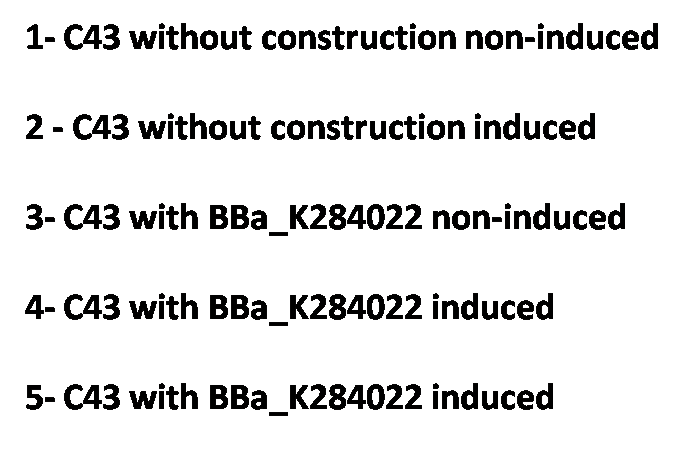Part:BBa_K284022:Experience
This experience page is provided so that any user may enter their experience using this part.
Please enter
how you used this part and how it worked out.
Applications of BBa_K284022
Lysozymes are widespread in plants and animals, where they constitute a natural defence mechanism against bacterial pathogens. Many bacteriophages also produce lysozymes that locally hydrolyse the peptideoglycan to facilitate penetration of the phage injection apparatus, or that induce cell lysis at the end of the phage replication cycle. Furthermore, bacteria themselves produce autolysins, peptideoglycan hydrolysing enzymes that are involved in de novo cell wall synthesis during cell growth and division, and some of these autolysins have lysozyme activity. Therefore, this enzyme can be used whenever the lysis of an bacteria is desired.
User Reviews
UNIQaa52129485c23c69-partinfo-00000000-QINU UNIQaa52129485c23c69-partinfo-00000001-QINU
In order to test the T4 endolysin we constructed a new device (BBa_K284022) containing the terminator BBa_B0014 and the part BBa_I746911, which consists of the RBS BBa_B0034 and the T7 promoter. Therefore, the endolysin is controlled by the T7 promoter. Our new device was transformed in E. coli C43 strain, an overexpression strain in which the T7 promoter can be induced by IPTG. A transformed colony was incubated in LB medium with ampicillin at 37ºC overnight. The culture was diluted in new LB medium with ampicillin to an OD=0,2 and incubated at 37ºC until reach an OD=0,8. At this point, the cells were induced with IPTG 1 mM and incubated again for 4 hours. After the end of the induction period the cells were plated in LB agar with ampicillin. The OD measurements showed a decrease on the growth of induced strains, in comparsion with non-induced ones.
Besides that, the death of cells expressing the endolysin was confirmed by the absence of growing colonies on the plates.
It was also possible to observe the overexpression of T4 endolysin through an SDS-PAGE.




